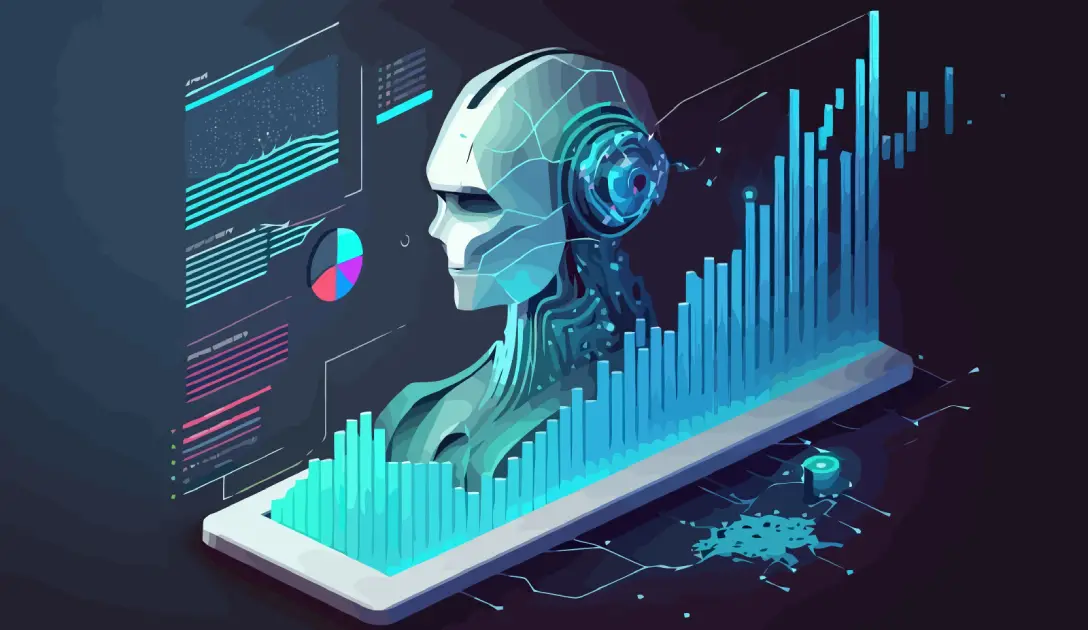Cyber threats are multiplying day-by-day and traditional security seems inadequate. With the advent of the internet and everything being connected via the internet, security is the most important. Hackers are constantly evolving. Hence, cybersecurity is more important that before. AI can prioritize critical incidents, detect real-time threats and automatically respond to attacks. It can do this while managing vulnerabilities and optimizing network security.
How AI is Changing Cybersecurity
AI is revolutionizing how we protect our digital world. By analyzing massive amounts of data in real time, AI can detect cyber threats, predict attacks, and respond faster than any human could. It can even spot vulnerabilities and stop malware or phishing scams before they cause harm. But the rise of AI in cybersecurity has also sparked a new arms race: while companies are using AI to defend against cybercriminals, hackers are also using it to launch more sophisticated attacks.
What is AI in Cybersecurity?
AI in cybersecurity is like a smart tool that helps security systems recognize and react to threats much faster than traditional methods. It can spot viruses, ransomware, phishing attempts, and other types of cyberattacks by analyzing huge amounts of data. The main benefits of AI in cybersecurity include:
- Faster threat detection
- Predicting potential cyberattacks
- Automating security tasks
- Hunting down threats before they escalate
AI is used in many security systems, like firewalls, endpoint protection, fraud detection, and cloud security, helping to strengthen network defenses and keep data safe.
Why is AI Needed in Cybersecurity?
Cyber threats are becoming more complex and harder to spot. AI can analyze data to detect patterns that might indicate a cyberattack is coming. It can predict future threats, automate routine security tasks, and respond to incidents in real time. This makes it a powerful tool for staying ahead of hackers and reducing risks.
How Does AI Work in Cybersecurity?
Think of AI in cybersecurity like a guard dog that learns new tricks to protect your home. Here’s how it works:
- Detection: Just as a dog learns to recognize your family members by their smell, AI can learn to spot unusual patterns in data, like multiple failed login attempts or strange file downloads. This helps it detect potential threats early.
- Prediction: Like a seasoned security guard who can anticipate where a thief might strike, AI looks at past data to predict future cyberattacks. By recognizing trends, it can warn about possible dangers before they happen.
- Adaptation: Your guard dog can learn new ways to protect your home. Similarly, AI systems get smarter over time, learning from past incidents to improve their threat detection abilities.
- Automation: Imagine having a robot security system that automatically takes action. AI in cybersecurity can block suspicious activity, quarantine infected files, and even block harmful IP addresses—all without needing human intervention.
- Response: When a threat is detected, your guard dog barks to alert you. AI systems do the same by sending out alerts or taking immediate action to reduce the impact of an attack.
The Bottom Line
AI is a powerful ally in the battle against cybercrime. It helps security systems work smarter, faster, and more effectively. But as cybercriminals also adopt AI for their attacks, we’re seeing a constant back-and-forth between defense and offense. To stay ahead, businesses must continuously adapt and strengthen their cybersecurity strategies.
Top 7 Uses of AI in Cybersecurity
AI is playing a huge role in improving cybersecurity, making systems smarter, faster, and more efficient. Here are the top seven ways AI is being used to protect against cyber threats:
- Enhanced Threat Detection & Analysis
AI can process large amounts of data in real time to detect potential cyber threats. By identifying patterns and irregularities, AI can spot unusual behavior that might indicate a cyberattack. Over time, AI systems get better at detecting threats as they “learn” from new data, giving security teams a clearer, up-to-date view of risks. - Automated Incident Response (AIR)
AI speeds up the process of responding to security incidents. When an issue arises, AI can automatically triage the situation and start mitigating the threat. This faster response time helps prevent damage. AI can also prioritize alerts based on urgency, allowing human teams to focus on the most critical problems. - Enhanced Security Risk Assessment
AI tools analyze an entire IT network to identify security risks and vulnerabilities. These systems can assess potential threats and determine how serious they are, helping businesses prioritize which risks need attention first. This allows companies to focus on the most pressing security issues. - User Behavior Analytics (UBA)
AI tracks user behavior to spot unusual activity that could signal a security threat. For example, if an employee suddenly accesses data they don’t normally use, AI can flag this as a potential insider threat or unauthorized access. By analyzing patterns, AI helps prevent data breaches and insider threats. - Malware Detection and Prevention
AI can detect malware by analyzing files for unusual behavior and patterns. Even if the malware is new and hasn’t been seen before, AI can compare it to known threats and identify similarities. If malware is detected, AI systems can isolate infected devices or automatically fix the issue to stop it from spreading. - Phishing and Email Scam Detection
AI helps detect phishing attempts by analyzing emails for signs of fraud. It looks at things like the sender’s behavior, strange attachments, or fake domain names to identify suspicious messages. AI-powered email security systems can block or quarantine phishing emails before they reach users, reducing the risk of falling for scams. - Vulnerability Management and Patch Prioritization
AI can help identify critical vulnerabilities in a system and prioritize which ones need to be fixed first. By analyzing past data and threat intelligence, AI can figure out which security gaps are most likely to be exploited. It also automates the patching process, ensuring that updates are applied quickly to reduce exposure to known threats.
AI is a powerful tool in the fight against cybercrime. By automating many tasks and detecting threats faster, AI makes it easier for businesses to stay one step ahead of hackers.








